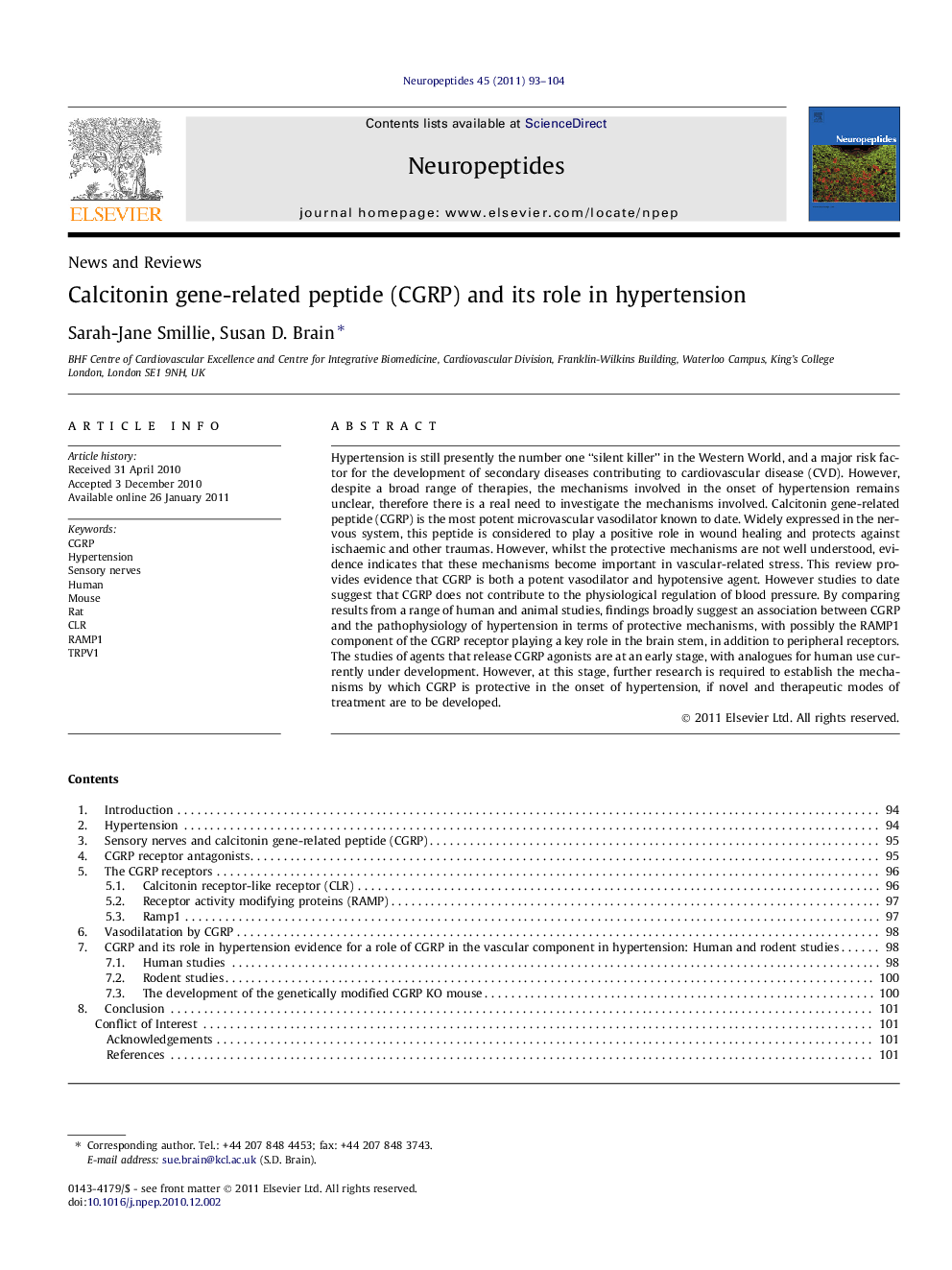| Article ID | Journal | Published Year | Pages | File Type |
|---|---|---|---|---|
| 2808138 | Neuropeptides | 2011 | 12 Pages |
Hypertension is still presently the number one “silent killer” in the Western World, and a major risk factor for the development of secondary diseases contributing to cardiovascular disease (CVD). However, despite a broad range of therapies, the mechanisms involved in the onset of hypertension remains unclear, therefore there is a real need to investigate the mechanisms involved. Calcitonin gene-related peptide (CGRP) is the most potent microvascular vasodilator known to date. Widely expressed in the nervous system, this peptide is considered to play a positive role in wound healing and protects against ischaemic and other traumas. However, whilst the protective mechanisms are not well understood, evidence indicates that these mechanisms become important in vascular-related stress. This review provides evidence that CGRP is both a potent vasodilator and hypotensive agent. However studies to date suggest that CGRP does not contribute to the physiological regulation of blood pressure. By comparing results from a range of human and animal studies, findings broadly suggest an association between CGRP and the pathophysiology of hypertension in terms of protective mechanisms, with possibly the RAMP1 component of the CGRP receptor playing a key role in the brain stem, in addition to peripheral receptors. The studies of agents that release CGRP agonists are at an early stage, with analogues for human use currently under development. However, at this stage, further research is required to establish the mechanisms by which CGRP is protective in the onset of hypertension, if novel and therapeutic modes of treatment are to be developed.
